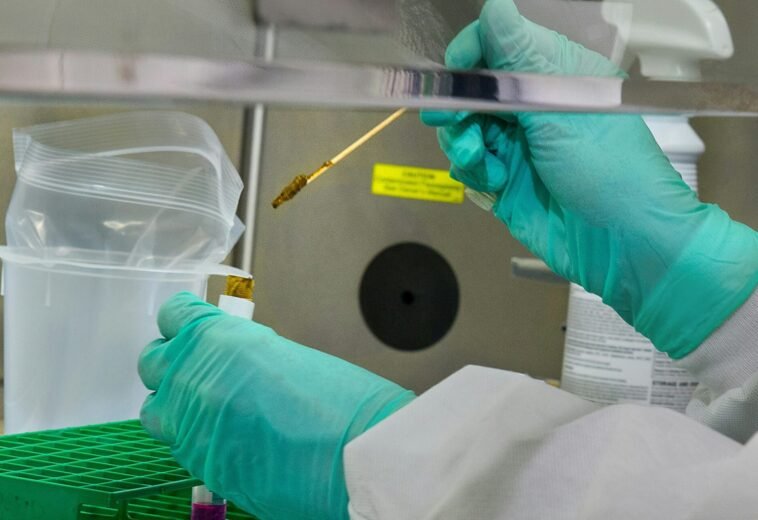What Do Forensic Scientists Do?
What Do Forensic Scientists Do?
Introduction
Forensic scientists play a critical role in the criminal justice system. By applying scientific principles and techniques, they help solve crimes, exonerate the innocent, and provide crucial evidence in court. This article delves into the various responsibilities and roles of forensic scientists, highlighting their importance and the diverse fields they work in.
Definition of a Forensic Scientist
A forensic scientist is a professional who uses scientific methods to analyze physical evidence from crime scenes. This evidence is then used to support investigations and legal proceedings. Forensic scientists work in various disciplines, including biology, chemistry, and digital forensics, to name a few.
Importance of Forensic Scientists
Forensic scientists are vital for multiple reasons:
- Criminal Investigations: They provide objective evidence that can lead to the arrest and prosecution of criminals.
- Exoneration of the Innocent: Through meticulous analysis, they help free individuals wrongfully accused or convicted of crimes.
- Legal Proceedings: Their expert testimony can be pivotal in court, aiding judges and juries in making informed decisions.
Roles and Responsibilities
Evidence Collection
One of the primary duties of forensic scientists is the collection of evidence at crime scenes. This involves:
- Documentation: Recording the scene through photographs, sketches, and notes.
- Sampling: Collecting physical samples such as blood, hair, fibers, and other trace evidence.
- Preservation: Ensuring evidence is preserved properly to prevent contamination or degradation.
Laboratory Analysis
After evidence is collected, forensic scientists perform various analyses in the lab:
- DNA Profiling: Identifying individuals based on their unique genetic makeup.
- Chemical Analysis: Examining substances like drugs, toxins, and unknown chemicals.
- Ballistics: Studying firearms, ammunition, and the effects of projectiles.
Expert Testimony
Forensic scientists often serve as expert witnesses in court:
- Presenting Evidence: Explaining the scientific methods used and the results obtained.
- Interpreting Findings: Helping the court understand the implications of the evidence.
- Providing Opinions: Offering professional opinions based on their analyses.
Branches of Forensic Science
Forensic Biology
Forensic biologists analyze biological evidence, including:
- DNA: Used for identification and establishing connections between suspects and crime scenes.
- Bloodstains: Interpreting patterns to reconstruct events.
- Serology: Studying bodily fluids for investigative purposes.
Forensic Chemistry
Forensic chemists focus on the chemical aspects of evidence:
- Toxicology: Analyzing bodily fluids for the presence of drugs, alcohol, and poisons.
- Substance Identification: Identifying unknown substances found at crime scenes.
- Material Analysis: Examining materials like paint, glass, and explosives.
Digital Forensics
Digital forensics involves investigating electronic devices and digital data:
- Data Recovery: Retrieving data from computers, smartphones, and other devices.
- Cybercrime Investigation: Tracking and analyzing cyber-attacks and digital fraud.
- Network Forensics: Studying network traffic to identify unauthorized activities.
Forensic Anthropology
Forensic anthropologists study human remains to:
- Determine Identity: Identifying individuals based on skeletal remains.
- Estimate Time of Death: Using decomposition rates and environmental factors.
- Reconstruct Faces: Creating facial reconstructions to aid identification.
Forensic Odontology
Forensic odontologists use dental evidence to:
- Identify Remains: Matching dental records with remains.
- Analyze Bite Marks: Comparing bite marks to suspects’ dental profiles.
- Age Estimation: Estimating age based on dental development.
Techniques and Tools Used by Forensic Scientists
DNA Analysis
DNA analysis is one of the most powerful tools in forensic science. Techniques include:
- PCR (Polymerase Chain Reaction): Amplifying DNA samples to create readable profiles.
- STR (Short Tandem Repeat) Analysis: Comparing specific DNA regions to identify individuals.
- Mitochondrial DNA: Analyzing maternal lineage when nuclear DNA is not available.
Fingerprint Analysis
Fingerprint analysis involves comparing ridge patterns:
- Latent Prints: Invisible prints revealed through chemical or physical methods.
- Patent Prints: Visible prints left in substances like blood or ink.
- Plastic Prints: Impressions left in soft materials like clay.
Ballistics
Ballistics experts study firearms and ammunition:
- Firearm Examination: Identifying weapons used in crimes.
- Trajectory Analysis: Determining the path of bullets.
- Gunshot Residue: Analyzing residue to place suspects at the scene.
Trace Evidence
Trace evidence includes small, often microscopic materials:
- Hair and Fibers: Linking individuals or objects to crime scenes.
- Paint and Glass: Identifying sources of transferred materials.
- Soil and Minerals: Connecting suspects to specific locations.
The Forensic Science Process
Crime Scene Investigation
The process begins at the crime scene:
- Securing the Scene: Ensuring evidence is protected from contamination.
- Systematic Search: Methodically searching for and collecting evidence.
- Initial Documentation: Recording initial observations and conditions.
Chain of Custody
Maintaining a secure chain of custody is crucial:
- Documentation: Keeping detailed records of evidence handling.
- Storage: Ensuring evidence is stored securely.
- Transfer: Tracking evidence as it moves between locations and individuals.
Laboratory Processing
In the lab, evidence undergoes detailed analysis:
- Initial Examination: Conducting preliminary tests and assessments.
- Specialized Testing: Performing specific analyses based on the type of evidence.
- Review and Reporting: Compiling findings into comprehensive reports.
Forensic Science in Popular Culture
TV Shows and Movies
Forensic science has gained significant attention through popular media:
- “CSI: Crime Scene Investigation”: Highlighting the work of forensic scientists.
- “Bones”: Featuring forensic anthropology and crime-solving.
- “Dexter”: Exploring blood spatter analysis and forensic psychology.
Influence on Public Perception
While popular culture has raised awareness, it has also led to misconceptions:
- Speed of Analysis: Real forensic investigations take much longer than depicted.
- Complexity of Cases: Actual cases are often more complex and nuanced.
- Infallibility: Forensic science is not always perfect and can be subject to error.
Challenges Faced by Forensic Scientists
Legal and Ethical Issues
Forensic scientists must navigate various challenges:
- Privacy Concerns: Balancing investigative needs with individual privacy rights.
- Bias and Objectivity: Ensuring impartiality in analysis and reporting.
- Ethical Dilemmas: Facing decisions that may have significant legal and personal consequences.
Technological Limitations
Despite advancements, forensic science has limitations:
- Equipment and Resources: Access to state-of-the-art technology is not always available.
- Evolving Techniques: Keeping up with the latest developments requires continuous education and training.
Human Error
Human error can significantly impact forensic investigations:
- Collection Mistakes: Errors in evidence collection can compromise cases.
- Analytical Errors: Mistakes in analysis can lead to incorrect conclusions.
- Misinterpretation: Misinterpreting results can affect the outcome of investigations.
Advancements in Forensic Science
New Technologies
Emerging technologies are enhancing forensic science:
- Next-Generation Sequencing: Providing more detailed genetic information.
- Digital Forensics Tools: Improving the ability to analyze and recover digital evidence.
- Portable Devices: Allowing for on-site analysis and quicker results.
Improved Methodologies
Ongoing research leads to better methodologies:
- Enhanced Techniques: Refining existing techniques for greater accuracy.
- Interdisciplinary Approaches: Combining multiple disciplines for comprehensive analysis.
- Standardization: Developing standardized protocols to ensure consistency.
Forensic Science Education and Careers
Degree Programs
Aspiring forensic scientists can pursue various educational paths:
- Bachelor’s Degrees: In forensic science, biology, chemistry
, or criminal justice.
- Master’s Degrees: Specialized programs in forensic science or specific subfields.
- Doctoral Degrees: For those seeking advanced research roles or academic careers.
Career Paths
Forensic science offers diverse career opportunities:
- Crime Scene Investigator (CSI): Collecting and analyzing evidence at crime scenes.
- Forensic Lab Analyst: Conducting laboratory tests on collected evidence.
- Forensic Pathologist: Performing autopsies to determine causes of death.
- Digital Forensic Expert: Investigating cybercrimes and recovering digital evidence.
- Forensic Anthropologist: Analyzing human remains to aid in identification and investigation.
Impact on the Legal System
Role in Criminal Justice
Forensic science is integral to the criminal justice system:
- Evidence-Based Prosecutions: Providing objective, scientific evidence to support legal proceedings.
- Exonerating the Innocent: Using forensic evidence to overturn wrongful convictions.
- Cold Case Resolution: Re-examining old cases with new forensic techniques to find resolutions.
High-Profile Cases
Numerous high-profile cases have highlighted the importance of forensic science:
- The O.J. Simpson Case: Forensic evidence played a crucial role, though it was highly contested.
- The JonBenét Ramsey Case: Forensic analysis has been central to ongoing investigations.
- The Boston Strangler: DNA evidence decades later confirmed the identity of the serial killer.
Forensic Science and Innocence Projects
Exonerations Through Forensic Evidence
Innocence projects leverage forensic science to free wrongfully convicted individuals:
- DNA Testing: Re-testing evidence with modern techniques to find matches.
- Re-analysis of Evidence: Using improved methodologies to review old evidence.
- Case Reviews: Comprehensive reviews of cases to identify potential wrongful convictions.
Case Studies
Case studies illustrate the impact of forensic science on exonerations:
- The Central Park Five: DNA evidence exonerated five men wrongfully convicted of rape and assault.
- Anthony Wright: DNA testing cleared Wright of a crime he didn’t commit after 25 years in prison.
- Richard Phillips: Forensic evidence contributed to Phillips’ exoneration after 45 years of wrongful imprisonment.
Future of Forensic Science
Emerging Trends
The future of forensic science is shaped by emerging trends:
- Artificial Intelligence (AI): AI and machine learning are being integrated to enhance data analysis and pattern recognition.
- Virtual Reality (VR): VR is being used to recreate crime scenes for more immersive investigations and court presentations.
- Forensic Genomics: Advanced genetic techniques are improving the resolution of DNA analysis.
Potential Developments
Potential developments could revolutionize forensic science:
- Non-Invasive Techniques: New methods that reduce the need for invasive procedures.
- Enhanced Database Systems: Improved databases for faster and more accurate matching of evidence.
- Global Collaboration: Increased international cooperation for sharing techniques, technologies, and data.
Misconceptions About Forensic Science
Common Myths
Several myths persist about forensic science, often fueled by popular media:
- Instant Results: Contrary to TV shows, forensic analysis often takes considerable time.
- Perfect Accuracy: Forensic science is not infallible; errors and uncertainties exist.
- Solving Every Crime: Not all crimes can be solved solely with forensic evidence.
Reality Check
Understanding the realities of forensic science is crucial:
- Complex Processes: Real forensic investigations involve meticulous, time-consuming processes.
- Team Effort: Successful forensic analysis often requires collaboration among various experts.
- Continuous Learning: Forensic scientists must stay updated with ongoing advancements in their field.
Conclusion
Recap of Key Points
Forensic scientists are essential to the criminal justice system, applying scientific expertise to uncover the truth and ensure justice. Their roles encompass evidence collection, laboratory analysis, and expert testimony across various specialized fields. Despite challenges, advancements in technology and methodologies continually enhance their effectiveness.
The Future Importance of Forensic Science
As forensic science evolves, its role in solving crimes, exonerating the innocent, and contributing to legal proceedings will become even more significant. The continuous development of new technologies and methods promises to improve the accuracy, efficiency, and scope of forensic investigations, making it an indispensable part of the justice system.
FAQs
What qualifications do you need to be a forensic scientist?
To become a forensic scientist, you typically need a bachelor’s degree in forensic science or a related field such as biology, chemistry, or criminal justice. Advanced positions may require a master’s or doctoral degree.
How reliable is forensic science?
Forensic science is highly reliable when conducted correctly. However, it is not infallible, and the accuracy of forensic evidence depends on the quality of the evidence, the methods used, and the expertise of the forensic scientists.
Can forensic science solve any crime?
Forensic science can solve many crimes, but not all. The success of forensic investigations depends on the availability and quality of evidence, as well as the specific circumstances of each case.
What is the most common type of forensic evidence?
DNA evidence is one of the most common and powerful types of forensic evidence. It is frequently used to identify suspects and victims and to link individuals to crime scenes.
How has forensic science evolved over the years?
Forensic science has evolved significantly, from early rudimentary techniques to sophisticated modern technologies such as DNA profiling, digital forensics, and advanced chemical analysis. Ongoing research and technological advancements continue to improve the field’s accuracy and effectiveness.
- 95 views





